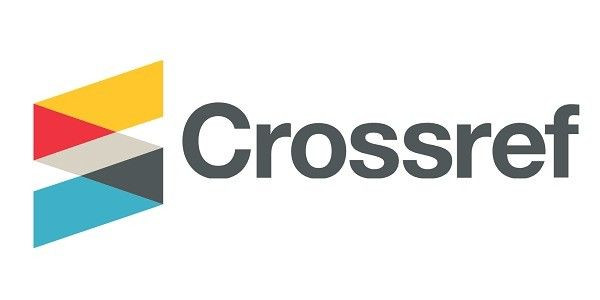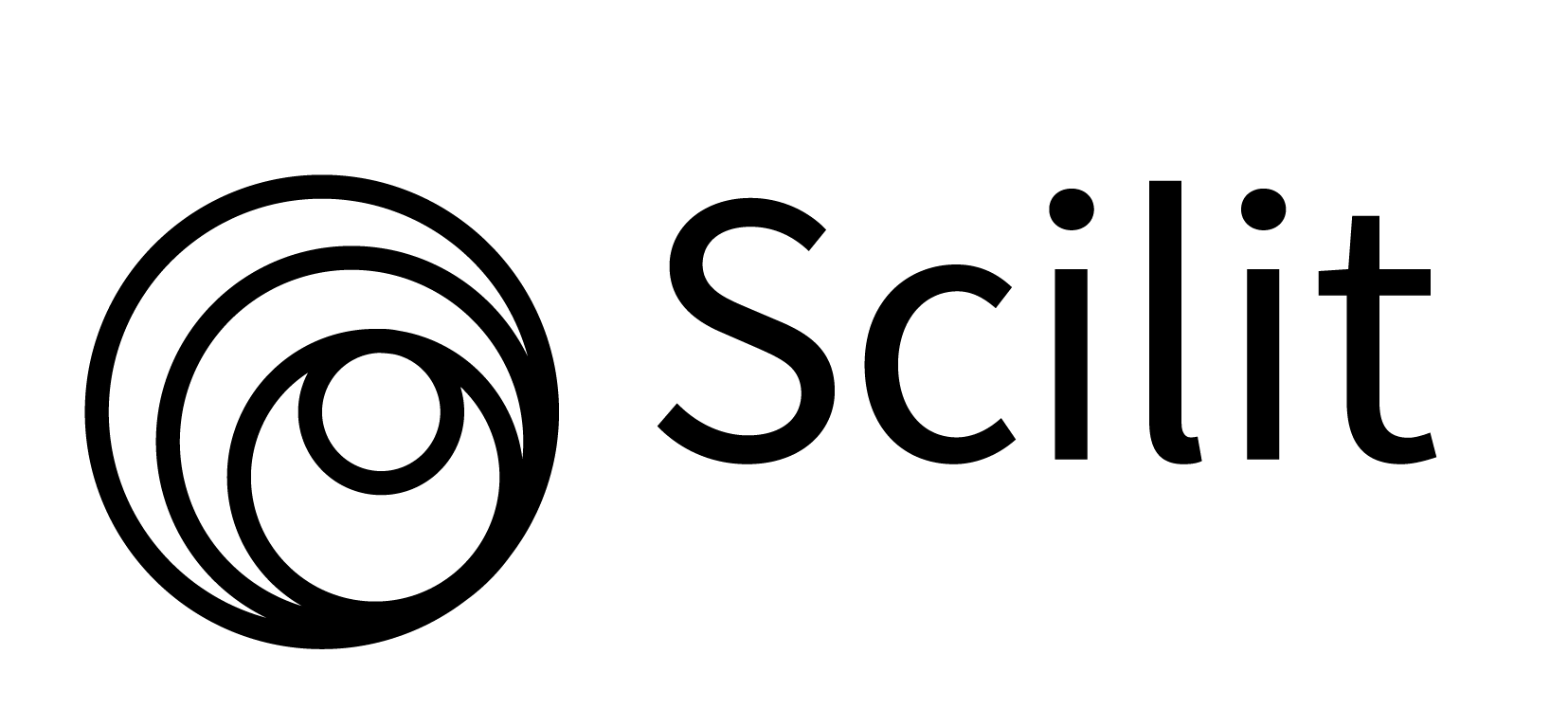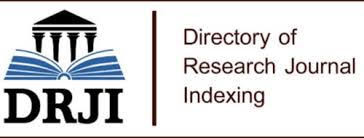Review Article
Comprehensive Review: Lyophilization of Injectable Pharmaceuticals
- Roshan Dave
Corresponding author: Roshan Dave, St. John Institute of Pharmacy and Research, India.
Volume: 2
Issue: 3
Article Information
Article Type : Review Article
Citation : Roshan Dave. Comprehensive Review: Lyophilization of Injectable Pharmaceuticals. Journal of Medicine Care and Health Review 2(3). https://doi.org/10.61615/JMCHR/2025/AUG027140806
Copyright: © 2025 Roshan Dave. This is an open-access article distributed under the terms of the Creative Commons Attribution License, which permits unrestricted use, distribution, and reproduction in any medium, provided the original author and source are credited.
DOI: https://doi.org/10.61615/JMCHR/2025/AUG027140806
Publication History
Received Date
18 Jul ,2025
Accepted Date
01 Aug ,2025
Published Date
06 Aug ,2025
Abstract
Lyophilization (freeze-drying) is a vital pharmaceutical process used to stabilize injectable drugs, particularly biologics like monoclonal antibodies, vaccines, and peptides, as well as antibiotics and degradation-prone small molecules. By removing water via sublimation (primary drying) and desorption (secondary drying) under vacuum, it transforms liquid formulations into solid cakes that can be stored for years at refrigerated or ambient temperatures. This process prevents hydrolysis, oxidation, and microbial growth while enabling rapid reconstitution. Successful lyophilization requires strict control of critical temperatures (e.g., glass transition temperature for amorphous systems, eutectic temperature for crystalline systems) to avoid structural collapse, alongside optimized formulations with cryoprotectants (e.g., trehalose), lyoprotectants, bulking agents, and surfactants to protect active ingredients. Key advantages include extended shelf-life, delivery of poorly soluble drugs, sterility assurance, and logistical efficiency. However, challenges include high costs, lengthy process times (48–96+ hours), sensitivity to operational deviations (risking collapse or melt-back), residual moisture control complexities, and potential protein instability. Recent advances focus on Process Analytical Technology (e.g., real-time moisture monitoring), controlled nucleation techniques, continuous processing, and Quality by Design (QbD) approaches. Despite its resource intensity, lyophilization remains indispensable for biologics and advanced therapies, with ongoing innovations enhancing its robustness and accessibility. Regulatory compliance demands rigorous validation and stability testing to ensure product quality.
Keywords: Freeze-drying, Eutectic temperature, Collapse temperature, Cryoprotectants, Lyoprotectants, Collapse.
►Comprehensive Review: Lyophilization of Injectable Pharmaceuticals
Roshan Dave1*
1Author affiliation: St. John Institute of Pharmacy and Research, India.
Introduction
The Critical Role of Lyophilization, or freeze-drying, stands as an indispensable processing technology within the pharmaceutical industry, particularly for stabilizing injectable drug products that cannot be marketed as conventional liquid solutions due to inherent instability. This dehydration technique is paramount for biologics (monoclonal antibodies, recombinant proteins, peptides, vaccines, cell/gene therapies), antibiotics, diagnostic agents, and select small-molecule drugs susceptible to hydrolysis, oxidation, or thermal degradation. The process transforms a liquid formulation into a stable solid cake by removing water (both ice and bound water) under vacuum via sublimation and desorption, enabling extended shelf-life at ambient or refrigerated temperatures, circumventing the need for complex and expensive frozen supply chains. Its ability to preserve complex molecular structures and ensure rapid reconstitution makes it the gold standard for high-value, unstable injectables.
Fundamental Principles and Process Stages
Lyophilization is a complex, energy-intensive, multi-stage process requiring precise control:
Formulation & Fill
The process begins with an optimized aqueous solution containing the Active Pharmaceutical Ingredient (API) and critical excipients (discussed later), filled into vials under strict aseptic conditions. Vial type, fill volume, and stopper design significantly impact heat transfer and drying uniformity.
Freezing
Objective: Solidify the solution, separating water into ice crystals and concentrating solutes (API and excipients) into an amorphous or crystalline phase within the interstitial spaces.
Critical Parameters: Cooling rate, final temperature (well below the critical temperature), and hold time. Controlled nucleation techniques (e.g., vacuum-induced surface freezing, ice fog) are increasingly explored to create more uniform ice crystal structures.
Critical Temperatures: The eutectic temperature (Teu) for crystalline systems (the lowest temperature where a mixture remains liquid) and the glass transition temperature of the maximally freeze-concentrated solute (Tg') for amorphous systems are paramount. The product temperature during primary drying must remain below Teu or Tg' to prevent structural collapse [25, 23].
Impact: Ice crystal size and morphology dictate the pore structure of the final dried cake, directly influencing resistance to vapor flow during drying and reconstitution properties. Slow freezing generally creates larger ice crystals.
Primary Drying (Sublimation)
Objective: Remove the ice (unfrozen/free water) by sublimation under vacuum.
Mechanism: Chamber pressure is reduced significantly (typically 50-300 mTorr), and controlled heat is applied (via the shelf). The applied heat provides the energy for sublimation (latent heat of sublimation ~2800 J/g). The vapor travels through the porous structure of the partially dried layer (the "dried cake") above the sublimation front (the moving interface between frozen and dried product) and is captured by the condenser (typically <-40°C to -80°C).
Critical Parameters: Shelf temperature, chamber pressure, and condenser capacity. The product temperature at the sublimation front is the most critical parameter and must be maintained below the collapse temperature (Tc ≈ Tg' for amorphous systems or Teu for crystalline systems) [19, 20].
Challenges: Excessive heat or pressure can cause collapse (loss of structure), melt-back (localized thawing), or microcollapse. Inadequate heat or excessive pressure prolongs the cycle unnecessarily. Non-uniform heat transfer across the shelf or between vials can lead to batch heterogeneity [19].
Endpoint Determination: Traditionally based on product temperature rising to approach shelf temperature and/or a significant drop in pressure rise test values. Advanced Process Analytical Technology (PAT) tools like Manometric Temperature Measurement (MTM) or Tunable Diode Laser Absorption Spectroscopy (TDLAS) provide real-time monitoring of sublimation rate and endpoint [13, 16].
Secondary Drying (Desorption)
Objective: Remove the unfrozen, bound water strongly adsorbed onto the dried solid matrix.
Mechanism: Shelf temperature is significantly increased (often to 25°C - 50°C or higher) while maintaining vacuum. Water desorbs from the solid phase directly into the vapor.
Critical Parameters: Shelf temperature, chamber pressure (though less critical than in primary drying), and duration. Temperature ramping rates must be controlled to avoid damaging sensitive APIs.
Residual Moisture: The target is typically 0.5% to 2.0% w/w. Too high moisture promotes degradation pathways (hydrolysis, Maillard reactions, protein aggregation). Too low moisture can compromise the stability of some proteins by altering the essential hydration shell or increasing brittleness. Precise control is vital [21, 17].
Endpoint Determination: Primarily based on achieving a target moisture content, measured offline (Karl Fischer titration, Loss on Drying) or inferred from pressure rise tests or relative pressure measurements (Pirani vs. Capacitance Manometer). Near-Infrared (NIR) spectroscopy offers potential for non-invasive in-line moisture monitoring.
Stoppering & Capping: Once secondary drying is complete and the target moisture is achieved, vials are stoppered under inert gas (usually nitrogen) while still under partial vacuum within the lyophilizer chamber. This creates the headspace environment. Capping (aluminum seals crimped over the stopper and vial flange) occurs offline, ensuring container closure integrity.
Formulation Design for Lyophilization
A successful lyophilized product hinges on an optimized formulation:
- API Characteristics: Sensitivity to freezing stress (cold denaturation, pH shifts due to buffer crystallization), drying stress (air-water interface denaturation), temperature, and residual moisture dictate excipient selection.
- Essential Excipient Classes: Bulking Agents: Provide cake structure and elegance (e.g., Mannitol, Glycine, Sucrose - crystalline; Hydroxyethyl Starch - amorphous). It must crystallize completely during freezing if the collapse temperature is to be defined by other amorphous components.
Cryoprotectants: Protect the API during freezing (e.g., Sugars - Sucrose, Trehalose; Amino acids - Arginine, Glycine; Polyols - Glycerol, Sorbitol). Stabilize against cold denaturation and concentration stresses.
Lyoprotectants: Protect the API during drying and in the dried state (primarily disaccharides like Sucrose and Trehalose). Form hydrogen bonds with the API, replacing water molecules and preserving the native structure in the glassy solid matrix. Their high Tg' is crucial [6, 8].
Buffers: Maintain pH during processing and storage (e.g., Histidine, Citrate, Phosphate, Succinate). Must be chosen carefully to minimize pH shifts upon freezing (crystallization of buffer salts) and to have minimal catalytic effect on degradation pathways.
Surfactants: Prevent surface-induced denaturation/aggregation at air-water or ice-water interfaces during freezing and drying (e.g., Polysorbate 20/80, Poloxamer 188, Sodium Dodecyl Sulfate - rarely in injectables). Critical for protein stability.
Tonicity Modifiers: May be needed in the reconstituted solution (e.g., NaCl, Mannitol). Often excluded from the lyo formulation itself to avoid high ionic strength during freezing/drying.
Optimization: Requires extensive pre-formulation studies (differential scanning calorimetry - DSC to determine Teu/Tg', freeze-dry microscopy - FDM to visualize collapse behavior) and empirical screening to identify the right excipients and their ratios to ensure API stability, elegant cake formation, and rapid, complete reconstitution [15].
Advantages of Lyophilization for Injectables
Unmatched Stability Extension: By removing water, the primary reactant/enabler in hydrolysis, oxidation, microbial growth, and many chemical degradation pathways (e.g., deamidation), lyophilization dramatically extends shelf-life, often to 2-3 years at 2-8°C or even 25°C. This is essential for labile biologics [14, 11].
Enabling Poorly Soluble Drugs: Drugs with very low aqueous solubility can be formulated into stable lyophilized solids and rapidly dissolved upon reconstitution with an appropriate diluent [28].
Rapid Reconstitution: The highly porous, high surface area structure of a well-formulated cake allows for dissolution typically within seconds to minutes upon addition of sterile Water for Injection (WFI), saline, or other specified diluents.
Sterility Assurance: The process is inherently aseptic (filling, loading, unloading under Grade A conditions). The final stoppered vial provides a robust sterile barrier. Terminal sterilization is generally not feasible for the dried product.
Logistical Benefits: Reduced weight and volume compared to liquid formulations (especially frozen liquids), simplified storage requirements (often only refrigeration instead of freezing), and reduced shipping costs [11].
Dose Accuracy: Allows precise filling of small volumes of concentrated solutions, ensuring accurate dosing after reconstitution.
Challenges and Limitations
High Cost & Resource Intensity: Requires significant capital investment in specialized lyophilizers, clean room infrastructure, and validation. Cycle times are long (often 48-96+ hours), consuming substantial energy and facility capacity. Labor costs are also high [22].
Process Complexity and Sensitivity: The process involves numerous interdependent critical process parameters (CPPs). Minor deviations in freezing rates, shelf temperature, chamber pressure, or condenser performance can lead to critical quality attribute (CQA) failures:
Structural Defects: Collapse (exceeding Tc results in viscous flow, leading to dense, shrunken, sticky cakes), melt-back, cracking, or blow-out [1].
Reconstitution Issues: Slow dissolution, incomplete solubilization, or formation of insoluble aggregates.
Heterogeneity: Non-uniform drying within a batch ("edge effect" vials dry faster) or within individual vials.
Stability Issues: Inadequate moisture removal or formulation instability leading to accelerated degradation during storage.
Scale-Up Complexity: Transferring an optimized cycle from laboratory to pilot to production scale requires careful consideration of differences in equipment dynamics (heat transfer coefficients, vapor flow paths, condenser efficiency) [26].
Excipient Compatibility and Toxicity: The need for specific stabilizers and bulking agents can introduce compatibility challenges or necessitate additional safety/toxicology studies, especially for novel excipients.
Residual Moisture Control: Precise and consistent measurement (Karl Fischer titration variability) and control remain challenges. Moisture migration during storage must also be considered.
Potential for Protein Instability: Despite protection, proteins can still experience stresses leading to aggregation, fragmentation, or chemical modification (deamidation, oxidation) during freezing, drying, or storage [28, 7].
Recent Advances and Future Directions
Process Analytical Technology (PAT): Implementation of real-time monitoring tools (TDLAS for vapor flow, NIR for moisture and API content, Raman spectroscopy for structure, MTM for product temperature and resistance) enables enhanced process understanding, dynamic cycle optimization, and real-time release. This is central to Quality by Design (QbD) approaches [10, 13, 9].
Controlled Nucleation: Techniques like vacuum-induced surface freezing, ice fog injection, or electrofreezing aim to induce nucleation uniformly and at a slightly higher temperature, promoting larger, more uniform ice crystals, potentially reducing primary drying times and improving cake structure uniformity [12, 18].
Modeling and Simulation: Advanced computational models predicting heat and mass transfer, ice nucleation kinetics, and drying dynamics are aiding cycle design, optimization, and scale-up [24, 27].
Continuous Lyophilization: Emerging technologies aim to move from batch to continuous processing (e.g., spin freezing, continuous conveyors through drying zones), promising significant efficiency gains, smaller equipment footprints, and improved product consistency [5, 4].
Alternative Drying Technologies: Spray drying and supercritical fluid drying are being explored for specific applications where thermal stability allows, offering faster processing but often facing challenges with sterility, aseptic handling of powders, and achieving very low moisture levels comparable to lyophilization [2].
Advanced Excipients: Research continues into novel stabilizers (e.g., specific amino acid combinations, polymers, ionic liquids) offering superior protection or allowing higher processing temperatures [3].
Regulatory and Quality Considerations
Lyophilized injectables are subject to stringent regulatory requirements (ICH Q1A(R2) Stability Testing, Q5C Quality of Biotechnological Products, Q8(R2) Pharmaceutical Development, Q9 Quality Risk Management, Q10 Pharmaceutical Quality System). Key aspects include:
QbD Implementation: Defining the Target Product Profile (TPP), identifying Critical Quality Attributes (CQAs - e.g., cake appearance, reconstitution time, residual moisture, purity, potency, sterility), understanding material attributes and CPPs, and establishing a Design Space. Robust Process Validation: Demonstrating consistent performance across multiple batches at commercial scale.
Stability Studies: Conducting long-term, accelerated, and stress stability studies on both the lyophilized cake and the reconstituted solution.
Container Closure Integrity (CCI): Critical verification throughout shelf-life, especially given the potential for stopper issues under vacuum.
Control of Residual Moisture and Headspace Gas: Specifications and validated analytical methods.
Conclusion
Lyophilization remains the cornerstone technology for stabilizing a vast array of injectable pharmaceuticals, particularly complex biologics and vaccines, that would otherwise be commercially unviable due to instability in liquid form. Its ability to extend shelf-life dramatically, enable poorly soluble drugs, and ensure rapid reconstitution justifies its complexity and cost. While challenges related to process sensitivity, scale-up, and cost persist, ongoing advancements in formulation science, process understanding (driven by QbD and PAT), modeling, and innovative technologies like controlled nucleation and continuous processing are continuously improving the robustness, efficiency, and application scope of lyophilization. As the pipeline of biological therapeutics and advanced therapy medicinal products (ATMPs) grows, the importance of mastering lyophilization technology will only increase.
- Adams, G. D. J, Irons, L. I. (1993). Some practical implications of structural collapse during freeze-drying. Developments in Biological Standardization. 74: 255-267.
- Ameri, M, Maa, Y. F. (2006). Spray drying of biopharmaceuticals: stability and process considerations. Drying Technology. 24(6): 763-768.
- Bhugra, C, Pikal, M. J. (2008). Role of thermodynamic, molecular, and kinetic factors in crystallization from the amorphous state. Journal of Pharmaceutical Sciences. 97(4): 1329-1349.
- Boss, E. A, Filho, R. M, Vasco de Toledo, E. C. (2021). Freeze-drying of pharmaceuticals in vials: Overview, modeling and future trends. Drying Technology. 39(11): 1589-1610.
- Capozzi, L. C, Pisano, R, Barresi, A. A. (2018). Continuous freeze-drying of pharmaceuticals: a review. Drying Technology. 36(13): 1537-1553.
- Carpenter, J. F, Pikal, M. J, Chang, B. S, Randolph, T. W. (1997). Rational design of stable lyophilized protein formulations: some practical advice. Pharmaceutical Research. 14(8): 969-975.
- Carpenter, J. F, Kendrick, B. S, Chang, B. S, Manning, M. C, Randolph, T. W. (2002). Inhibition of stress-induced aggregation of protein therapeutics. Methods in Enzymology. 309: 236-255.
- Crowe, J. H, Carpenter, J. F, Crowe, L. M. (1998). The role of vitrification in anhydrobiosis. Annual Review of Physiology. 60: 73-103.
- De Beer, T, Vercruysse, P, Burggraeve, A, Quinten, T, Ouyang, J, Zhang, X, Remon, J. P. (2008). In-line and real-time process monitoring of afreeze drying process using Raman spectroscopy. Analytical Chemistry. 80(10): 3755-3766.
- FDA. (2004). Guidance for Industry: PAT — A Framework for Innovative Pharmaceutical Development, Manufacturing, and Quality Assurance. U.S. Department of Health and Human Services.
- Franks, F. (1998). Freeze-drying of bioproducts: putting principles into practice. European Journal of Pharmaceutics and Biopharmaceutics. 45(3): 221-229.
- Geidobler, R, Winter, G. (2013). Controlled ice nucleation in the field of freeze-drying: fundamentals and technology review. European Journal of Pharmaceutics and Biopharmaceutics. 85(2): 214-222.
- Gieseler, H, Kessler, W. J, Finson, M, Davis, S. J, Mulhall, P. A, Bons, V, Pikal, M. J. (2007). Evaluation of tunable diode laser absorption spectroscopy for in-process water vapor mass flux measurement during freeze drying. Journal of Pharmaceutical Sciences. 96(7): 1776-1793.
- Jennings, T. A. (1999). Lyophilization: Introduction and Basic Principles. CRC Press.
- Jiang, S, Nail, S. L. (1998). Effect of process conditions on recovery of protein activity after freezing and freeze-drying. European Journal of Pharmaceutics and Biopharmaceutics. 45(3): 249-257.
- Kuu, W. Y, Nail, S. L, Sacha, G. (2009). Rapid determination of vial heat transfer parameters using Tunable Diode Laser Absorption Spectroscopy (TDLAS) in response to step-changes in pressure set-point during freeze-drying. Journal of Pharmaceutical Sciences. 98(3): 1136-1154.
- Oetjen, G. W, Haseley, P. (2004). Freeze-Drying. 2nd ed. Wiley-VCH.
- Oddone, I, Arsiccio, A, Van Bockstal, P. J, Pisano, R, De Beer, T. (2014). Vacuum induced surface freezing as an effective method for improved inter-and intra-vial product homogeneity. European Journal of Pharmaceutics and Biopharmaceutics. 88(3): 934-941.
- Patapoff, T. W, Overcashier, D. E. (2002). The importance of freezing on lyophilization cycle development. BioPharm International. 15(3): 16-21.
- Pikal, M. J. (2000). Heat and mass transfer in low pressure gases: applications to freeze drying. Transport Phenomena in Pharmaceutical Systems. 611-686.
- Pikal, M. J. (2007). Freeze drying. In Encyclopedia of Pharmaceutical Technology. Informa Healthcare. 3: 1807-1833.
- Rambhatla, S, Pikal, M. J. (2003). Heat and mass transfer scale-up issues during freeze-drying, I: Atypical radiation and the edge vial effect. AAPS PharmSciTech. 4(2): 111-120.
- Searles, J. A, Carpenter, J. F, Randolph, T. W. (2001). The ice nucleation temperature determines the primary drying rate of lyophilization for samples frozen on a temperature-controlled shelf. Journal of Pharmaceutical Sciences. 90(7): 860-871.
- Sheehan, P, Liapis, A. I. (1998). Modeling of the primary and secondary drying stages of the freeze drying of pharmaceutical products in vials: numerical results obtained from the solution of a dynamic and spatially multi-dimensional lyophilization model for different operational policies. Biotechnology and Bioengineering. 60(6): 712-728.
- Tang, X. C, Pikal, M. J. (2004). Design of freeze-drying processes for pharmaceuticals: practical advice. Pharmaceutical Research. 21(2): 191-200.
- Tang, X, Nail, S. L, Pikal, M. J. (2006). Freeze-drying process design by manometric temperature measurement: design of a smart freeze-dryer. Pharmaceutical Research. 23(12): 2807-2816.
- Velardi, S. A, Barresi, A. A. (2008). Development of simplified models for the freeze-drying process and investigation of the optimal operating conditions. Chemical Engineering Research and Design. 86(1): 9-22.
- Wang, W. (2000). Lyophilization and development of solid protein pharmaceuticals. International Journal of Pharmaceutics. 203(1-2): 1-60.
Download Provisional PDF Here
PDF




p (1).png)




.png)




.png)
